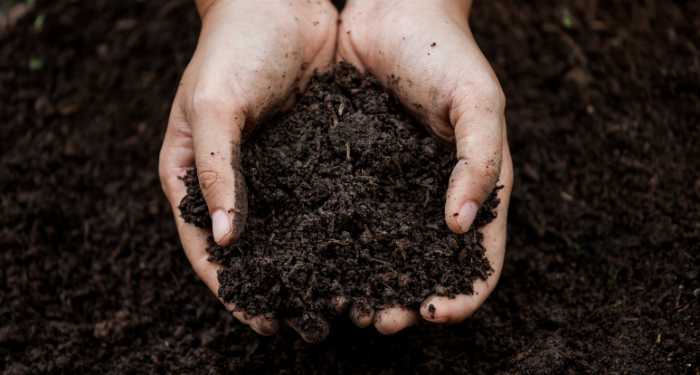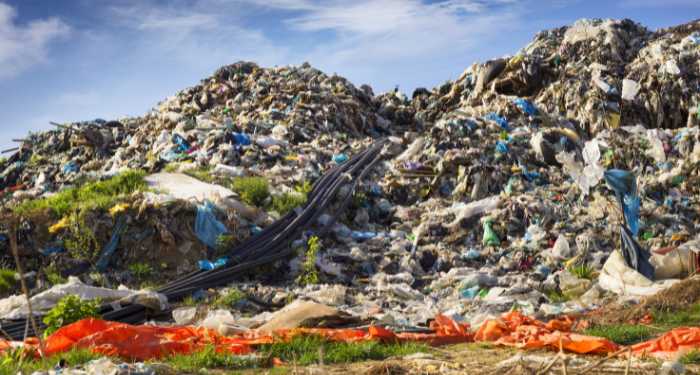Celebrate World Soil Day with Backyard Composting
Posted December 3, 2024 Held annually on December 5, World Soil Day recognizes the importance of healthy soil and advocates for the sustainable management of soil resources. Soil degradation is one of our biggest environmental concerns and occurs due to improper use or poor management of this vital resource. When the quality of soil declines, its capacity to support animal and plant life diminishes, so it’s important to raise awareness and take action to protect our soils.
Held annually on December 5, World Soil Day recognizes the importance of healthy soil and advocates for the sustainable management of soil resources. Soil degradation is one of our biggest environmental concerns and occurs due to improper use or poor management of this vital resource. When the quality of soil declines, its capacity to support animal and plant life diminishes, so it’s important to raise awareness and take action to protect our soils.
Soil is so much more than just “dirt.” Dirt is what you get under your fingernails; soil is a diverse, living blend of minerals, water, air, and organic matter. Healthy soil is essential to our everyday lives and provides us with plants that help feed, clothe, and shelter us.
World Soil Day is the perfect opportunity to celebrate the power of compost when it comes to improving soil health. When added to the soil, compost enhances the soil’s fertility, structure, water-holding capacity, and carbon sequestration. Compost also helps replace essential nutrients lost due to intensive farming practices and natural processes.
What is Compost?
Simply put, compost is decomposed organic matter, including food scraps, yard debris, and paper products. However, composting requires specific conditions to successfully break down these materials. Composting is an aerobic process, which means it requires oxygen to break down solid organic waste. This is because the aerobic microorganisms that turn food and garden waste into compost require oxygen to support their life.
In addition to oxygen, composting organisms require the following components:
- Carbon (“Brown” Material): provides energy
- Nitrogen (“Green” Material): assists in growing and reproducing more organisms to oxidize the carbon
- Water: helps with decomposition and regulates the temperature
How Compost Improves Soil Health
Compost Enriches Soil
Compost is rich in nitrogen, phosphorus, and potassium, which are all essential to healthy plant growth. Incorporating compost into the soil replenishes these vital nutrients and improves the soil’s ability to hold nutrients. It accomplishes this by increasing the soil’s cation exchange capacity (CEC), which is a measure of the soil’s ability to hold onto essential nutrients. Healthy soil is critical to supporting heathy vegetation.
Compost Improves Soil Structure
Adding compost to fine-textured soils, such as clay, helps reduce detrimental soil compaction. When soil becomes too dense, it makes it difficult for plants to grow because their roots cannot penetrate the soil. Incorporating compost loosens up dense soil, allowing for better root penetration and overall plant health.
Additionally, more pore space allows room for air and water to circulate, both of which promote a healthy environment for root growth and beneficial microorganisms.
Compost Increases Soil’s Water-Holding Capacity
Compost is also a superstar when it comes to holding water, so it is a powerful addition to coarse-textured sandy soils because it helps bind the soil particles, making it more resistant to erosion and improving its water-retaining properties. This means the vegetation will require less watering, which provides greater resistance to droughts and more efficient use of valuable water resources.
Additional Environmental Benefits of Composting

The environmental benefits of composting do not stop at improved soil health. Composting diverts organic waste from landfills where it lacks the oxygen necessary for proper decomposition. When organic matter decomposes in landfills, it releases methane—a greenhouse gas more than 25 times as potent as carbon dioxide as a heat-trapping gas.
According to the U.S. Environmental Protection Agency (EPA), food waste accounts for over 20% of municipal landfill waste. The good news is much of this organic matter is compostable and can be added to your GEOBIN® Composter. This includes fruit and vegetable scraps, eggshells, and used coffee grounds—all of which are sources of nitrogen.
Yard waste is another great addition to compost. Grass clippings, leaves, twigs, and other debris can be shredded and easily incorporated into your compost pile. This type of organic waste also produces methane gas when it ends up in landfills, so composting is a great way to help reduce harmful methane emissions.
Tips for Incorporating Compost into Your Soil
Adding compost to your garden is one of the best ways to improve soil health, whether you’re gardening in raised beds, containers, or directly in the ground. The method and mixture depend on your garden setup:
For Raised Beds or Containers
For raised beds and container gardening, the right soil mix can make all the difference. A popular and effective formula is the 40-40-20 mix:
- 40% Topsoil (or Potting Soil for Containers): Provides structure and supports water retention.
- 40% Compost: Adds essential nutrients and organic matter to the soil.
- 20% Coarse Material: Improves aeration and drainage, essential for preventing root rot.
This mix creates a balanced soil that supports healthy root development, optimal drainage, and sufficient nutrient availability. Adjust the ratios slightly for plants with specific needs or challenging climates. Always ensure you’re using high-quality, clean ingredients to maximize success in your garden.
For In-Ground Gardens
In-ground gardens require a different approach, focusing on improving existing soil rather than replacing it entirely:
- Spread 1–2 inches of compost over your garden soil.
- Use a garden fork or tiller to mix the compost into the top 6–12 inches of soil.
- This method enhances soil structure, fertility, and water retention, helping plants thrive without disrupting the natural soil ecosystem.
Whether you’re gardening in a raised bed or directly in the ground, incorporating compost is a sustainable way to boost soil health and promote plant growth.
To learn more about composting food and yard waste, check out our Beginner’s Guide to Composting.

